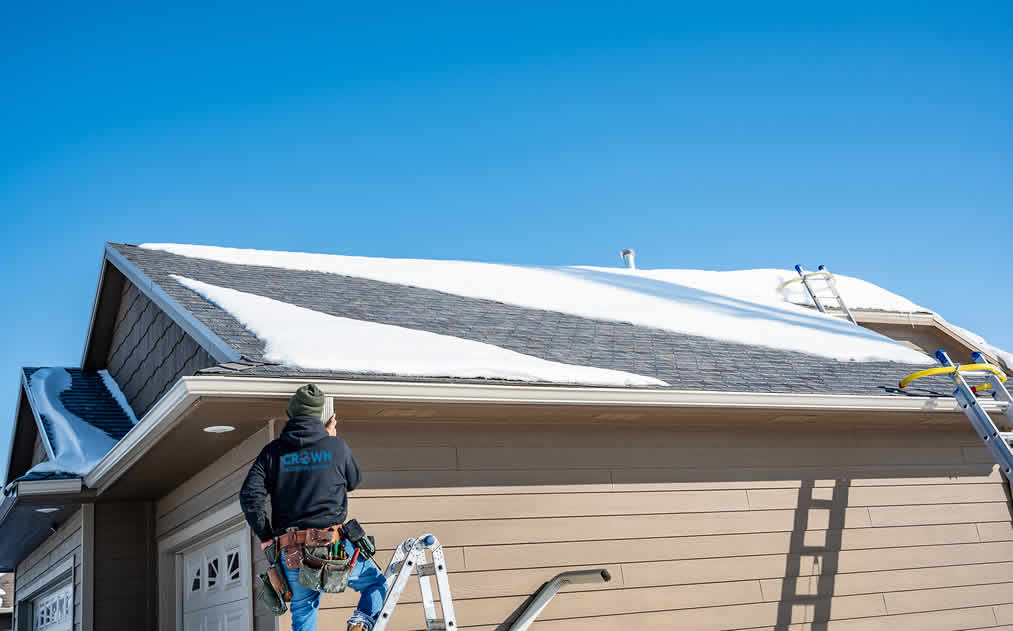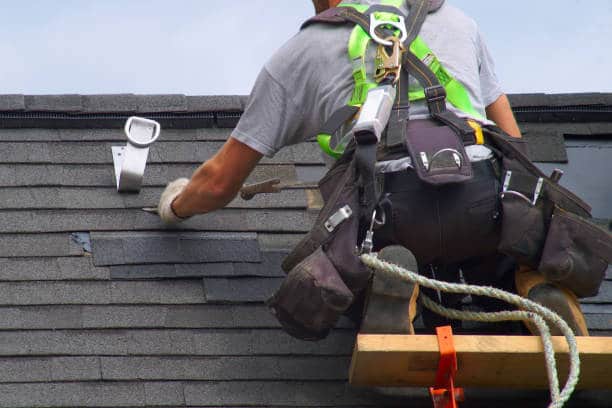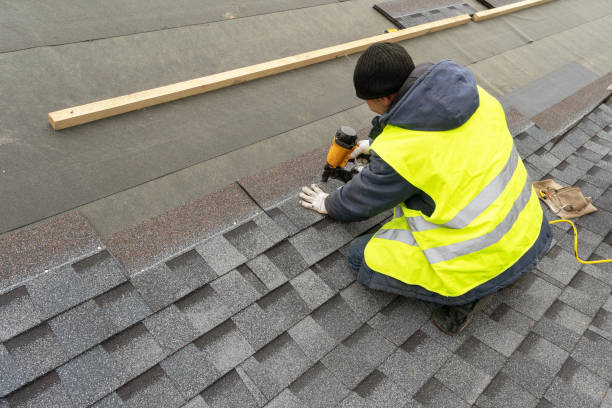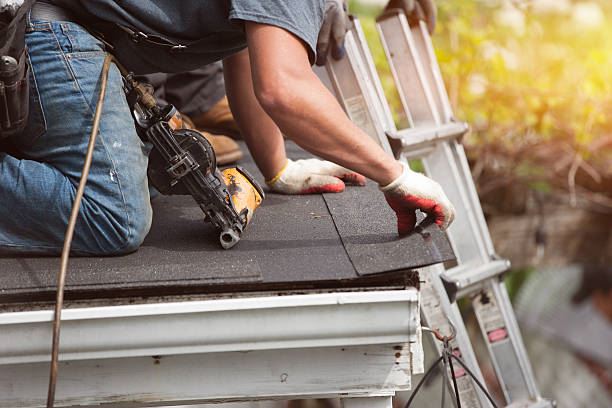Flat Roof Scuppers: The Key to Optimal Water Management and Building Protection

In modern architecture, the flat roof is very popular, and flat roof repairs are just as common. Even more attractive is the installation of a flat circulating roof, transformed into a garden or other type of relaxation area. However, many people are still reluctant about opting for this type of roof, especially because of preconceived notions about its drainage capabilities.
It is good to know that roofing materials and technologies have been very much improved along the years, to the point that nowadays you can get optimal protection regardless of the type of roof you choose.
Qualified Orlando commercial roofing contractors confirm that there are actually several ways to drain a flat roof:
- Inner Drains
- Gutters
- Siphonic Roof Drains
- Scuppers
A roof scupper is a flat roof drainage system that allows the water runoff from the surface of the roof to exit, through the deck or through a parapet wall, into a downspout. This system formed by scuppers and downspouts is very efficient for collecting the water and preventing it from leaking down the walls.
Scuppers have a few significant advantages compared to other flat roof drainage options with a lower cost. Some models are wide enough for leaves and twigs not to get stuck and block the water drainage flow.
What are scuppers on a roof?
When it comes to roofing systems, effective drainage is paramount to safeguarding the structural integrity and longevity of any building. Scuppers are a vital component of a roof’s drainage system, playing a significant role in efficiently directing water away from the roof’s surface. In this article, we’ll explore what scuppers are, how they function, and their importance in maintaining a water-tight and robust roofing system.
What are Scuppers? A roof scupper is a type of drainage system that allows water to flow off a flat or low-sloped roof. Scuppers are typically located near the edges of the roof, and designed to direct water away from the building. Roof scuppers prevent water from pooling on the roof and causing costly damage to your roof membrane.
Typically scuppers are made of metal, PVC, or other durable materials. They provide an alternative to traditional gutters and downspouts, serving as a simple and effective solution for managing rainwater on flat or low-sloped roofs.
How do Scuppers Work? During rainfall or snowmelt, water accumulates on the roof’s surface. Scuppers create a pathway for this water to exit the roof, preventing ponding or excessive weight that could lead to structural damage over time. As gravity pulls the water downward, it flows through the scupper openings and safely evacuates from the roof. This process not only protects the roof from potential leaks and water-related issues but also reduces the risk of water infiltration into the building.
Key Advantages of Scuppers:
- Simplicity: Scuppers are relatively straightforward in design and installation, making them cost-effective compared to complex gutter systems.
- Low Maintenance: With no moving parts, scuppers require minimal maintenance, reducing long-term upkeep costs.
- Enhanced Drainage: Scuppers facilitate faster and more efficient drainage, preventing water buildup and reducing the risk of water-related damage.
- Aesthetic Appeal: As scuppers are often integrated seamlessly into the roof’s design, they can add a touch of architectural elegance and visual appeal.
- Scuppers vs. Gutters: While gutters are a popular choice for roof drainage, scuppers offer distinct advantages. Gutters require regular cleaning to prevent clogs, which can lead to overflow and potential damage. In contrast, scuppers do not accumulate debris, eliminating the need for frequent maintenance. Additionally, scuppers are less prone to damage from ice buildup, as they lack the long, horizontal sections vulnerable to expansion and contraction.
Scuppers are indispensable elements in a roof’s drainage system, providing a reliable and cost-effective solution for managing rainwater and protecting the integrity of the roof and the building it shelters.
Their simplicity, efficiency, and low maintenance requirements make them a valuable choice for architects, builders, and property owners seeking effective water management solutions. Whether designing a new roof or upgrading an existing one, considering scuppers as part of the drainage strategy can contribute to a resilient and long-lasting roofing system.
The Importance of Flat Roof Scuppers for Protecting Your Building: Crown Offers Top-Notch Solutions
Flat roof scuppers play a critical role in preventing water damage to a building’s structure, particularly in areas with heavy rainfall or snowfall. Without proper drainage, water can accumulate on the roof, leading to leaks, rot, and other forms of damage.
Crown is a trusted provider of flat roof scuppers, offering a wide range of high-quality options to suit any building’s needs. The company’s skilled technicians have the expertise and experience to install scuppers that are not only functional but also aesthetically pleasing and durable.
Customers can rely on Crown for top-notch scupper installation services that are tailored to their specific needs and preferences. The company’s commitment to quality and customer satisfaction is evident in every project, ensuring that customers receive the best possible results every time.
Get the Scoop on Roof Scuppers: The Benefits and Advantages
Roof scuppers are an important part of a building’s drainage system and help to prevent water damage to the roof and structure. They are especially important in areas where there is a lot of rainfall or snowmelt. Without a scupper, water would pool on the roof and could eventually leak into the building, causing damage to the ceiling and walls.
Do you know the purpose of a roof scupper?
A roof scupper is a drainage feature installed on the edge of a flat or sloped roof. Its purpose is to allow water to drain off of the roof and away from the building, preventing leaks and water damage.
There are two main types of roof scuppers: internal and external. Internal scuppers are located within the perimeter of the roof, while external scuppers are located outside of it. Both types of scuppers serve the same purpose, but they differ in how they are installed and how they function.
Internal scuppers are typically installed along the inside edge of a parapet wall or other barrier that surrounds the perimeter of the roof. They are usually made of metal or plastic and have a grated surface that allows water to drain through while keeping debris out. Internal scuppers typically have a minimum width of 4 inches (10 cm) and a minimum height of 6 inches (15 cm).
External scuppers are typically installed along the outside edge of a parapet wall or other barrier that surrounds the perimeter of the roof. They are usually made of concrete, stone, or brick and have an open top that allows water to drain through. External scuppers typically have a minimum width of 6 inches (15 cm) and a minimum height of 8 inches (20 cm).
While both internal and external scuppers serve the same purpose, there are some advantages and disadvantages to each type. Internal scuppers are less likely to become clogged with debris than external scuppers, but they can be more difficult to install and maintain. External scuppers are easier to install and maintain, but they may be more likely to become clogged with debris.
When choosing between internal and external scuppers, it is important to consider the specific needs of your building and your climate. If you live in an area with high winds or heavy rains, you may want to choose an external scupper so that water can drain off more quickly. If you live in an area with light rains or snow, you may want to choose an internal scupper so that water can drain off more slowly and less debris will be able to enter it.
Crown Roof Scupper Opportunities

Flat roof drainage systems
Emergency roofing

Roof drainage solutions
Roofing Contract

Roof water management systems
Roofing Sarasota Florida
Roof Scupper Benefits
A roof scupper is an important part of any roofing system. It is a simple but effective way to allow water to drain away from the roof surface, preventing it from pooling and causing damage.
There are many benefits to having a roof scupper installed on your roof. Firstly, it helps to prolong the life of your roof by preventing water damage. Secondly, it can help to improve the energy efficiency of your home by keeping the roof surface cooler in summer and warmer in winter. And thirdly, it can provide an additional level of security for your home by deterring animals and pests from entering the roof space.
If you are considering having a roof scupper installed on your home, then we would highly recommend doing so. It is a wise investment that will pay for itself many times over in the long run.
Roof Scupper Installation
A roof scupper is a drainage opening in the parapet or sidewall of a building that allows water to drain from the roof. They are typically installed at the corners of a building, but can also be placed along the sides of a building. Roof scuppers are an important part of a building’s drainage system and help to prevent water from pooling on the roof and causing leaks.
Installing a roof scupper is relatively simple and can be done by anyone with basic DIY skills. The first step is to cut a hole in the parapet or sidewall of the building using a saw. The size of the hole will depend on the size of the scupper you are installing. Next, insert the scupper into the hole and secure it in place using screws or bolts. Finally, seal around the edges of the scupper with caulk or sealant to prevent leaks.
Roof scuppers are a great way to prevent water from pooling on your roof and causing leaks. They are relatively easy to install and require no special skills or tools. If you have any questions about installing a roof scupper, please feel free to contact us and we will be happy to assist you.
Tips for Maintaining Your Roof Scupper
When it comes to maintaining your roof scupper, there are a few things you can do to ensure its longevity. First, make sure that the drains are clear and free of debris. This will allow water to flow freely and not pool up on the surface. Second, check for cracks or holes regularly and seal them as soon as possible. This will prevent water from seeping in and causing further damage. Finally, Inspect the flashing around the scupper to make sure it is secure and in good condition. If you notice any problems, contact a professional roofing contractor immediately to have it repaired or replaced.
A roof scupper is a small drainage opening in the parapet or eaves of a building. They are typically found near the corners of a building and are used to collect and drain water away from the roof.
The purpose of a roof scupper is to allow water to drain off the roof and away from the building, helping to prevent water damage.
The benefits of a roof scupper include preventing water damage, extending the life of the roof, and improving aesthetics.
Installing a roof scupper is relatively simple and can be done by anyone with basic carpentry skills. First, cut a hole in the parapet or eaves large enough to accommodate the scupper. Next, attach flashing around the perimeter of the hole using screws or nails. Finally, insert the scupper into the hole and seal it with caulk or mortar.
Maintaining your roof scupper is important to ensure its longevity. Inspect it regularly for signs of leaks or corrosion and make repairs as needed. You should also clean out any debris that may have accumulated in the scupper to keep it clear and functional.
Crown, a trusted provider of roofing solutions, offers FREE roof inspections to its customers. This service is designed to help customers identify potential issues with their roofs before they become major problems, saving them time, money, and headaches in the long run.
During the free roof inspection, Crown’s skilled technicians will carefully examine the roof for any signs of damage, wear and tear, or other issues that may affect its performance. This includes checking for leaks, cracks, missing shingles, and other common roofing problems.
After the inspection is complete, the technician will provide the customer with a detailed report of their findings, including recommendations for any necessary repairs or maintenance. This report will also include an estimate of the cost and timeline for completing the work, giving customers the information they need to make an informed decision about their roofing needs.

